Star Trek: Klingons
Written by Jackson Lanzing & Collin Kelly
Art by Timothy Green II, Colors by DC Alonzo, Letters by Neil Uyetake
Published by IDW Publishing, February 2022
“I am Kahless. Son of Kanjis, hermit of the Kri’stak fire mountain. I have forged this blade from its fires to bring you his message. I carve in your stone an ancient word. One that has not meant anything to Klingons for many thousands of years. I place it here because without my carving, you have none. Do you know this word?”
“It is honor.”
In 2022, IDW Publishing will be releasing a number of one-shot, extra-long comic books featuring significant untold stories illuminating the cultures of various Star Trek races, beginning this month with Star Trek: Klingons, a Samurai-influenced tale focusing on a key moment in the life of Qo’noS’ favorite son, Kahless the Unforgettable.
Written by Jackson Lanzing and Collin Kelly, lead writers of the fantastic Star Trek: Year Five series released by IDW from 2019-2021, Star Trek: Klingons takes us from Kahless’ confrontation of his brother, Morath at the base of the volcanic Mount Kri’stak (as mentioned in the Star Trek: The Next Generation episodes “New Ground” and “Firstborn”) through his epic one-man stand at Three-Turn Bridge (mentioned in Deep Space Nine’s “Let He Who Is Without Sin…”). Along the way, Kahless battles and befriends a fierce wild targ, teaches three corrupt warlords about honor and comes face to face (sort of) with the tyrant Molor, who was worshipped almost as a god.
The story functions as a sort of vision quest for Kahless, traversing the length and breadth of Qo’noS and remembering scenes from his life… scenes that have their origin in tales told and songs sung by Klingons in the canonical televised Star Trek series. But Lanzing and Kelly are not content to just string these tales together like pearls on a necklace, they use each episode to explore Kahless’ understanding of honor, and to contrast his understanding with the goals of the corrupt people that he encounters in his journey. Kahless seems to live in a time when Klingons were living by a code of brute power – a might-makes-right sort of philosophy. But Kahless sees through the emptiness of that worldview, and offers a deeper approach to life, though it might cost him everything to communicate it to the Klingon people.
It is not clear to me what Lanzing and Kelly’s take on Klingon honor is, exactly. Kahless uses the word as a conversation-stopper and an accusation, judges as unworthy those who he deems to lack it, and is willing to put his life on the line to defend and promote it, but without some clear definition of what Kahless means by the word, it is difficult to take it as seriously as he seems to. For example, in The Next Generation, it is said that Kahless chased Morath for twelve days and nights because his brother had told a lie – indicating that Klingon honor involves truth-telling. In this story, it seems as though Kahless is pursuing Morath for murdering their father. What is the moral content of the word?
The art by Timothy Green II is dynamic and suitably epic, channeling Asian influences from both comics and cinema. Green favors the reader with several two-page splash images, showcasing his mastery of scene, perspective, and setting. Green is able to keep his Klingons recognizably distinct from one another, with a huge array of striking forehead patterns, armor and costume designs, and hairstyles. His inking is clear and precise, and his use of shadow is striking. But there are some sections using intercuts that while suitably intense, can be a bit confusing. Green is able to bring epic scale to some of the combat with some excellent double-page layouts, which would most shine in the printed version of the comic, but lose some of the scale in the digital version, especially viewed on a smaller screen.
After the climactic battle, the tyrant Molor shows up in a peculiar way, and exits the scene in such a manner that portends the promise of an even greater battle to come, if Lanzing and Kelly are given another opportunity to tell that story. Based on what is here in this issue, I hope they get that chance, and that they can bring Timothy Green II along to supply the visuals.
Star Trek: Klingons comes with two impressive cover options. The regular cover by Green depicts Kahless brandishing his bat’leth in a very samurai-inspired pose, with a large portrait of an older Kahless looming in the background. And the Retailer Incentive Cover by Alexandra Beguez features a very striking portrait of TNG actor Kevin Conway as Kahless, holding his bat’leth in guard position and staring into the reader’s eyes. Both are fantastic images that get at the heart of the story inside.
The next IDW alien spotlight story will feature the Ferengi, and will be released in April. IDW editor Heather Antos teased Vulcans, Trill, and “beyond” as possible additional entries in this series in the future.
Available now
Star Trek: Klingons was released on February 23rd at a retail price of $7.99. You can find it at your local comic shop, or pick up the digital edition at Amazon/comiXology.
Keep up with all the Star Trek comics news, previews and reviews in TrekMovie’s comics category.

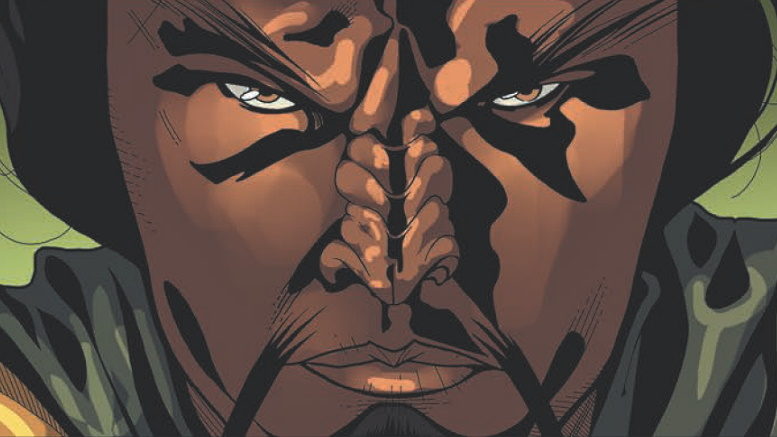
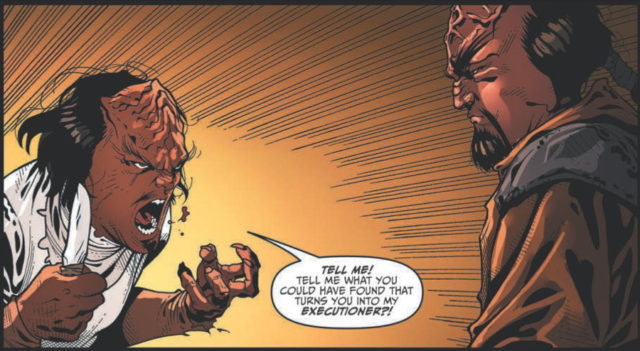
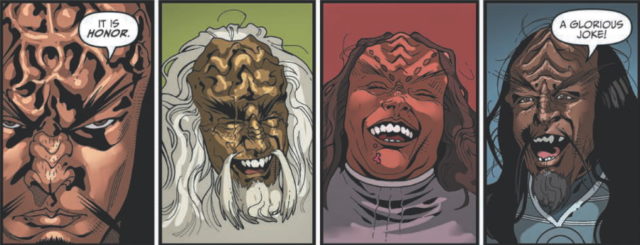
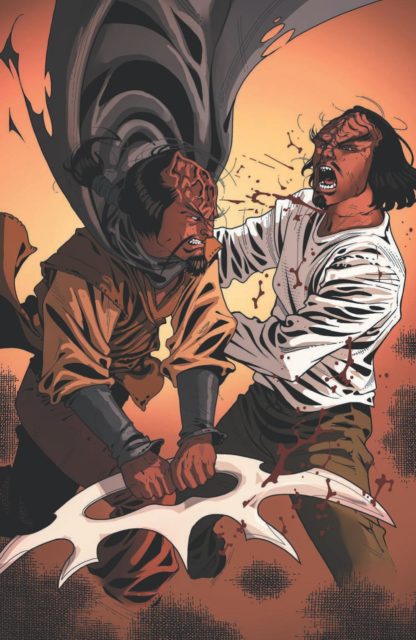
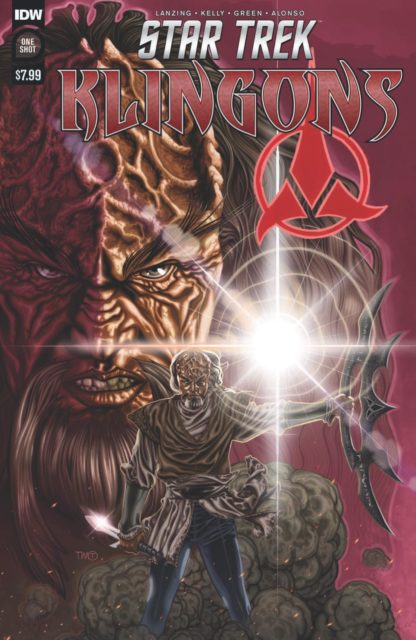
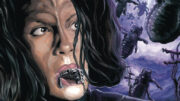
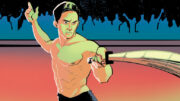
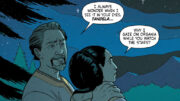
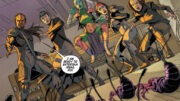
Huh. Here’s an embarrassing confession:
Until just now I always thought that Kahless’ brother and his main enemy are the same person. Probably because of the somewhat similar names (Morath and Molor)…
“It is not clear to me what Lanzing and Kelly’s take on Klingon honor is, exactly. Kahless uses the word as a conversation-stopper and an accusation, judges as unworthy those who he deems to lack it”
This has been the problem with Klingon honor ever since the concept was introduced. As the guys on Mission Log point out frequently (as did Picard a few times). Honor is wibbly-wobbly. Molded to fit whatever situation and argument is at hand, and about as firmly applied as the Prime Directive.